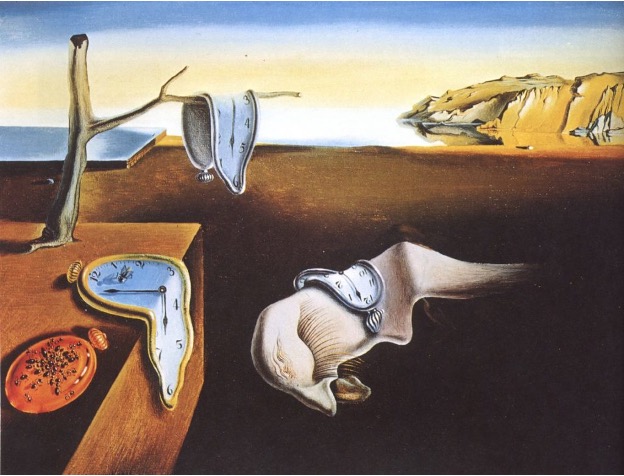Artwork Analysis
Title, Author, Medium
Art history has numerous examples of pieces that have influenced humankind by introducing new symbols of old concepts. Salvador Dali’s 1931 painting “The Persistence of Memory ” is an excellent illustration of this phenomenon.” The medium is oil on canvas, and the image presents a set of clocks melting in different positions. At first glance, it lacks any noticeable meaning, but a closer inspection of professional commentary reveals its value.

Themes
Time and death are the central topics of this masterpiece. As Lloyd (2022) notes, this is one of Dali’s most famous works, which solidified him as one of the most prominent artists of his time. This piece depicts the artist’s idea of the modern way of life, which is represented by melting clocks and empty spaces around them. It accents the issue of wasting time and not noticing how precious this resource is.
Symbols
In addition to bending and flowing, one of the clocks is shown to be ridden with ants. According to Lloyd (2022), this insect symbolizes decay, which, in this context, is also a metaphor for lost potential. Moreover, the central figure’s flesh-like color induces a sense of threat, making other elements more menacing. Thus, this art piece motivates viewers to reevaluate their perception of time and potential.
Learning facts about Dali’s work was an enjoyable practical activity that advanced my analytical skills and showed how specific objects can correlate to complex ideas. Lloyd’s (2022) description presented clues that led to a process of deciphering other possible interpretations. As a result, I connected this work with my personal and professional life in addition to the commonly mentioned meanings. It taught me to treasure available resources and distribute them in productive ways.
It also presented the idea that time unused is time lost, reinforcing my motivation to be an effective worker. This decision greatly benefited my time-management skills, allowing me to combine professional and domestic responsibilities in a well-structured schedule. Therefore, the process of interpretation not only improves learning potential but also inspires practical changes.
Art and Education
Art may benefit an individual’s learning skills, making it essential in professional training. An article by Dalia et al. (2020) illustrates this phenomenon by researching the effect of introducing abstraction-related exercise in medical curriculum. As a result, the students who gained the skills to analyze symbols and make art-life connections were more successful in utilizing professional knowledge in unexpected conditions.
As a personal example, my infatuation with art and literature taught me to look for ways to transfer the systems represented in narrative and visual representations to real-life examples. These disciplines substantially increased the effectiveness of my learning experiences as they familiarized me with complex concepts in slightly different contexts. Thus, arts-related knowledge is transferrable and beneficial to other spheres of life.
This course will contribute to my development as a nurse by presenting more opportunities to practice analytical methods. The professional benefits of these skills include a more profound understanding of protocols, as the logic behind them will be more evident. Moreover, adaptability will improve, as noticing familiar patterns in unexpected circumstances will be easier. Due to more developed empathy, personal advantages will be noticeable in time management, emotion control, and conflict resolution. Thus, humanities studies are essential to higher education, as they provide transferrable analysis techniques.
In conclusion, learning about art is a perfect exercise of abstract imagination and systemic analysis. Identifying symbols and their meanings motivates viewers to find more relatable and familiar examples of the presented ideas. Consequently, they begin using these skills daily, allowing them to understand new material more profoundly and memorize a more significant portion of it for longer. Moreover, patterns from one field may be transferred to other spheres of life, dramatically increasing the learning potential of people who habitually analyze art.
References
Dalí, S. (1931). The Persistence of Memory [painting]. MoMA, New York, NY, United States. Web.
Dalia, Y., Milam, E. C., & Rieder, E. A. (2020). Art in medical education: A review. Journal of Graduate Medical Education, 12(6), 686–695. Web.
Lloyd, D. (2022). Authors and art movements of the twentieth century: Painterly poetics. Routledge.